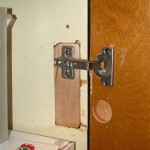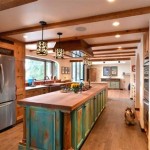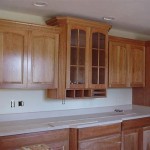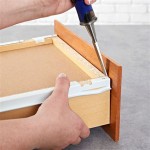Putting Crown Molding On Kitchen Cabinets: A Guide to Achieving a Professional Finish
Adding crown molding to kitchen cabinets is a great way to elevate the look of your kitchen and create a more finished appearance. Crown molding is a decorative molding that is installed at the top of cabinets, along the ceiling line. It can be made from a variety of materials, including wood, plastic, and metal. The most common type of crown molding for kitchen cabinets is made from wood, which can be painted or stained to match the cabinets.
Installing crown molding is a relatively simple project that can be completed in a few hours. However, it is important to take your time and follow the instructions carefully in order to achieve a professional-looking finish. Here are the steps involved in putting crown molding on kitchen cabinets:
1. Measure and Cut the Crown Molding
The first step is to measure and cut the crown molding to the correct length. To do this, you will need to measure the distance from one end of the cabinet to the other, along the ceiling line. Once you have the measurement, add 1 inch for overlap. This will give you the total length of crown molding that you need to cut.
To cut the crown molding, you will need to use a miter saw. A miter saw is a power tool that makes angled cuts. To cut the crown molding, set the miter saw to a 45-degree angle. Then, place the crown molding on the saw and carefully cut it to length.
2. Install the Crown Molding
Once you have cut the crown molding, you are ready to install it on the cabinets. To do this, you will need to apply a bead of construction adhesive to the top of the cabinets, along the ceiling line. Then, press the crown molding into place, making sure that the mitered ends are aligned correctly.
Once the crown molding is in place, you will need to secure it with nails. To do this, use a finishing nailer to drive 1-inch nails through the molding and into the cabinets. Space the nails about 6 inches apart.
3. Fill the Nail Holes and Caulk the Seams
Once the crown molding is installed, you will need to fill the nail holes and caulk the seams. To fill the nail holes, use a wood filler that matches the color of the crown molding. To caulk the seams, use a paintable caulk that matches the color of the paint or stain on the cabinets.
Once you have filled the nail holes and caulked the seams, your crown molding will be complete. You can now enjoy the beautiful new look of your kitchen!

Adding Crown Molding To Kitchen Cabinets Young House Love

Cabinet Crown Molding

Diy Kitchen Cabinet Upgrade With Paint And Crown Molding

10 Steps To Install Crown Molding On Cabinets Fine Homebuilding
Crown Installation On Kitchen Cabinets Issue Contractor Talk Professional Construction And Remodeling Forum

How To Add Crown Molding Kitchen Cabinets Abby Organizes

How To Attach Crown Mouldings Frameless Cabinets Stonehaven Life

How To Attach Crown Mouldings Frameless Cabinets Stonehaven Life

Diy Kitchen Cabinet Upgrade With Paint And Crown Molding

How To Install Crown Molding On Kitchen Cabinets
Related Posts








